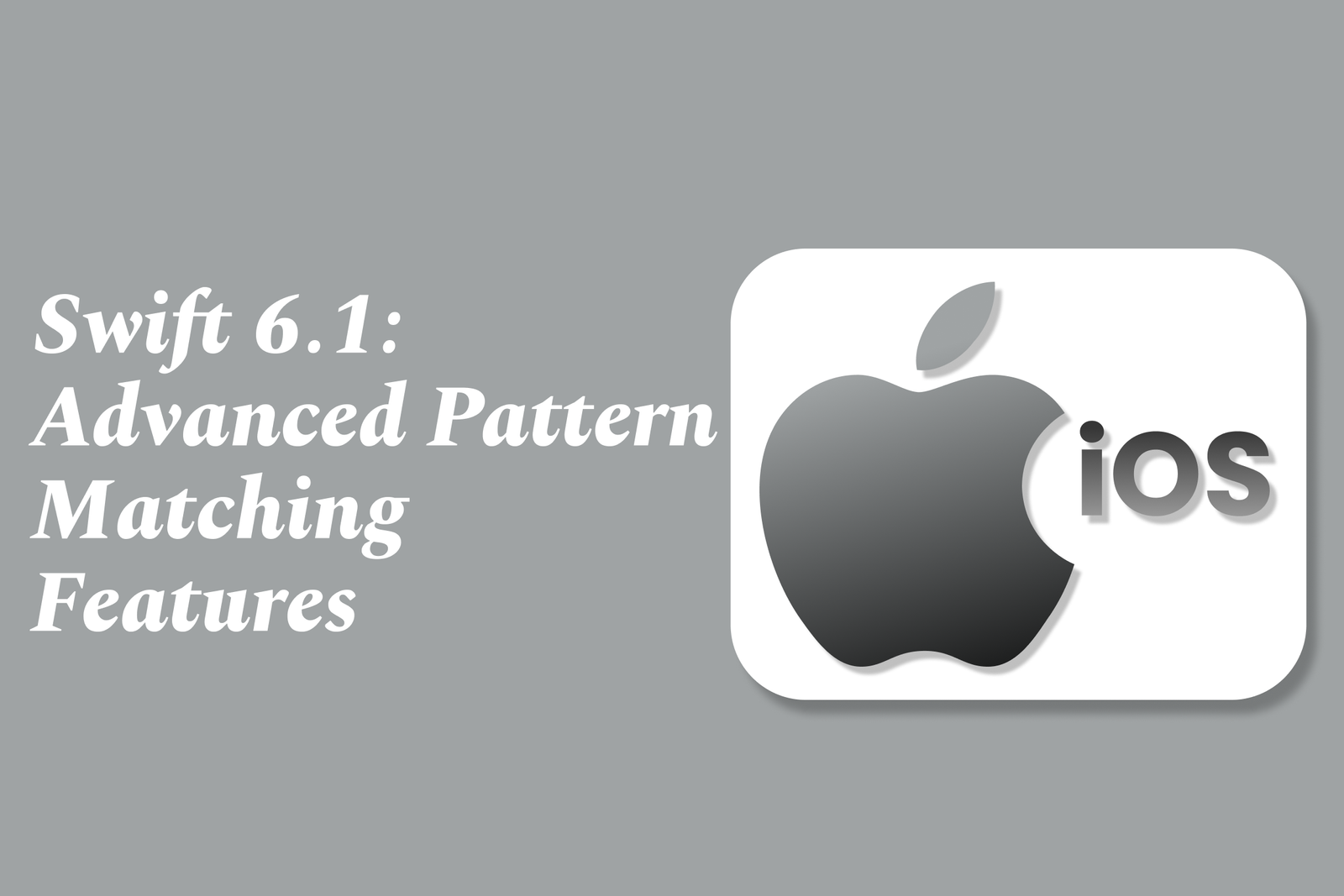Swift 6.1: advanced pattern matching features
Swift 6.1 introduces advanced pattern matching features that enhance code clarity and safety by supporting noncopyable generics, move-only types, and refined ownership models, enabling developers to write more efficient, resource-safe, and expressive Swift code.
Swift 6.1: Advanced Pattern Matching Features
1 ) Introduction to Noncopyable Generics in Swift
Swift 6.1 introduces advanced features around noncopyable generics that enhance performance and safety.
These new generics are designed to be non intrusive, activated only when required.
Noncopyable generics enable libraries to manage resources more efficiently by avoiding unnecessary copying of data.
2 ) Background and Evolution
The feature has been evolving through Swift’s official evolution proposals, notably SE 0427.
Early discussions highlighted some confusion around concepts such as `~Copyable`.
Recent toolchain improvements now support pointers and optionals of noncopyable types, helping developers experiment with these features.
3 ) Practical Example: Building a Singly Linked List
To demonstrate these new generics, a linked list implementation leveraging noncopyable generics was developed.
This approach parallels concepts found in Rust's ownership model.
The example uses a `Box` type to provide safe and efficient heap indirection without reference counting, using `UnsafeMutablePointer` internally but hiding its unsafety.
4 ) Key Features of the Box Type
Declared as a struct with `: ~Copyable`, opting out of default copyable behavior.
Supports a destructor (`deinit`), which is possible because the struct is noncopyable.
Prevents accidental copies by enforcing move semantics – when a Box goes out of scope, its `deinit` safely cleans up resources.
This pattern can serve as a foundation for noncopyable data structures in Swift's standard library.
5 ) Using Experimental Features
To use noncopyable generic features, developers must enable experimental flags (`NoncopyableGenerics`, `MoveOnlyPartialConsumption`, `BorrowingSwitch`) in their toolchain or Xcode.
The features are in active development, and the Swift compiler with these features can produce debug assertions, so developers are encouraged to report bugs with reproducible examples.
6 ) Broader Context: Swift 6 Concurrency and Typed Throws
Swift 6 also brings improvements in concurrency, enabling complete concurrency safety by default with fewer false positives.
A new “typed throws” mechanism allows functions to specify the exact error type thrown, enhancing error handling precision.
Ownership and memory management in Swift 6 have matured to support both copyable and noncopyable types seamlessly.
7 ) Implications for Developers
Advanced pattern matching and ownership features in Swift 6.1 unlock performance optimizations and safer code designs especially for resource intensive applications.
Developers interested in systems level and low level programming will find Swift 6.1 a compelling upgrade.
These features align Swift closer to languages like Rust in terms of ownership and safety guarantees.
Summary
Swift 6.1 enhances the language with advanced noncopyable generics to support efficient and safe resource management. Through new language constructs and experimental features, Swift empowers developers to write performant, ownership aware code, exemplified by practical data structures like singly linked lists that embrace move semantics without overhead. Alongside concurrency and error handling improvements, Swift 6.1 represents a significant step in evolving Swift as a robust language for modern, high performance applications.
https://justacademy.in/news-detail/how-react-native-is-powering-the-next-generation-of-desktop-apps
https://justacademy.in/news-detail/flutter-ux-design-tips-in-2025
https://justacademy.in/news-detail/flutter-adds-ai-toolkit:-what-it-means-for-developers
https://justacademy.in/news-detail/flutter-ai-sdk-vs-traditional-ml-kits
https://justacademy.in/news-detail/react-native?s-performance-gains-on-android-15
Related Posts
In 2025, top Angular libraries offer modern, feature-rich components and tools for building dynamic web apps. From powerful data grids to low-code platforms like UI Bakery, these libraries enhance development speed, UI design, and scalability, making them essential for Angular developers.
Migrating from AngularJS to Angular 17 involves gradually upgrading your app by running both frameworks together using tools like ngUpgrade, rewriting components in TypeScript, and adopting Angular’s modern architecture to enhance performance, maintainability, and long-term support.
Angular state management tools help organize and handle app data efficiently, improving scalability and maintainability. Popular options include NgRx for robust, RxJS-based patterns, and newer Signal Store solutions that offer simpler, reactive approaches integrated tightly with Angular’s latest features.
RxJS in Angular empowers developers to manage asynchronous data streams with powerful operators like `forkJoin`, `combineLatest`, and `zip`. Mastering these key operators in 2025 is essential for building efficient, reactive applications that handle complex event sequences seamlessly.
Angular performance optimization in 2025 focuses on improving app speed and responsiveness by using techniques like OnPush change detection, lazy loading, efficient data caching, and AOT compilation. These practices reduce load times, enhance user experience, and ensure scalable, fast Angular applications.
In 2025, Angular remains preferred for large-scale, enterprise apps with its robust, all-in-one framework, while Vue attracts developers seeking simplicity and fast development for smaller projects. Both frameworks excel, with choice driven by project needs and team expertise.
Angular Signals are a new reactive primitive in Angular 16 that enable fine-grained, efficient change detection by automatically tracking dependencies and updating only affected parts of the UI. They simplify state management and boost app performance, revolutionizing Angular's reactivity model.
Angular interview questions to prepare in 2025 focus on core concepts like components, directives, data binding, routing, and dependency injection, along with TypeScript mastery and latest Angular features to ensure strong practical knowledge for building scalable, efficient web applications.
AngularJS reached its official end of support in January 2022, meaning no further updates or security patches. To ensure app security and performance, developers should consider migrating to modern Angular versions or seek third-party long-term support options if immediate migration isn’t possible.
The Angular Roadmap 2025 highlights upcoming features focused on improving developer experience and performance, including zoneless Angular, Signals integration, enhanced Forms, async data handling, improved HMR, and expanded Angular Material/CDK enhancements, driving modern, efficient web app development.










